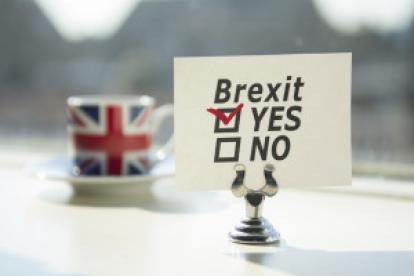When the UK voted in the Brexit Referendum on 23 June 2016 whether to remain or leave the European Union, the majority voted in favour of leaving. This was only the third UK-wide referendum ever held. They are rare because the UK relies upon the principle of Parliamentary sovereignty. However, the UK Government have instituted a process for the public to register petitions online. If a petition gets over 100,000 votes, the Petitions Committee will consider it for a debate in Parliament.
Even before the EU Referendum was held, on 25 May 2016 a petition was registered online calling for a second referendum to be held if the turnout was less than 75% and, based on that turnout, the majority was less than 60%. The results fell below both of those levels. There was a turnout of 71.8% of registered voters; 51.9% voted to leave (17,410,742 Votes) 48.1% voted to remain (6,141,241 Votes). Effectively, 37.33% of the Electorate voted in favour of leaving. In the days following the Referendum, over 4 million people signed the online petition.
The Government Digital Service verified the signatures on the petition and removed 77,000 fraudulent signatures. The Petition Committee then scheduled the debate on 5 September in Westminster Hall, the second debating chamber of the House of Commons. A debate in Westminster Hall does not have the power to change the law, and could not end with the House of Commons deciding whether or not to have a second referendum. It will be up to the Government to decide whether it wants to start the process of agreeing a new law for a second referendum.
Before the debate took place, the Government issued a formal response to the Petition:
-
“The EU Referendum Act received Royal Assent in December 2015. The Act was scrutinised and debated in Parliament during its passage and agreed by both the House of Commons and the House of Lords. The Act set out the terms under which the referendum would take place, including provisions for setting the date, franchise and the question that would appear on the ballot paper. The Act did not set a threshold for the result or for minimum turnout.
-
As the Prime Minister made clear in his statement to the House of Commons on 27 June, the referendum was one of the biggest democratic exercises in British history with over 33 million people having their say. The Prime Minister and Government have been clear that this was a once in a generation vote and, as the Prime Minister has said, the decision must be respected. We must now prepare for the process to exit the EU and the Government is committed to ensuring the best possible outcome for the British people in the negotiations.”
During the 3 hour debate which took place on 5 September, the Minister stressed the need to respect the outcome of the referendum. The Minister was asked to recognise that different parts of the United Kingdom voted in different ways. Whilst a majority of voters in England and Wales voted to leave, the majority of voters in Scotland, Northern Ireland and Gibraltar voted to remain. This will mean the new Prime Minister, Teresa May, will have to tread carefully to maintain the union and preserve the United Kingdom outside the EU.
This was not the only petition which has been put down as a result of the EU Referendum. A petition supported by 122,439 signatures has called for article 50 of the Lisbon treaty to be invoked immediately. Parliament will debate this petition on 17 October 2016. In the meantime, the Department for Exiting the European Union has responded:
-
“The British people have voted to leave the EU and their will must be respected and delivered. The process for leaving the EU and determining our future relationship will be a complex one, so we need to take time to think through our objectives and approach. We want to ensure the best possible outcome for Britain and the future UK-EU relationship. As part of this, the government will of course work closely with the devolved administrations to ensure we get the best deal for the UK as a whole. We should not trigger Article 50 until we have a UK approach and objectives, so Article 50 should not be invoked before the end of this year.”
It is interesting to compare the UK experience and use of referenda relating to the EU with that of Switzerland. Switzerland are not in the EU but have agreed a treaty with the EU to have the benefit of Free Trade and Free Insurance Services (but not free financial services), subject to free immigration from EU.
In February 2014, there was a Swiss Referendum when 50.3% voted in favour of restricting immigration from EU. Under Swiss law, the government has three years to implement the Referendum. During two and a half years of negotiations with the EU, Switzerland has come nowhere near to implementation, because limiting immigration from EU would automatically end relevant Free Trade arrangements. Switzerland is still negotiating with EU whether and how immigration could be limited on the one hand with keeping Free Trade arrangements on the other hand. This will be discussed further at the next meeting between Jean-Claude Junker and the Swiss President Johann Schneider-Ammann in Zurich on 19 September 2016.
October 2015, a second referendum was initiated under the relevant Swiss referenda rules with more than the required 100,000 signatures calling for a second referendum to be held to reverse the results of the February 2014 Referendum. Under the existing Swiss Rules, the date for such second referendum needs to occur 27 April 2018. It remains to be seen what happens if the three year period set in the referendum expires on 9 February 2017 without immigration having been limited.
All this goes to show that democracy is hard….. and you can’t please all of the people all of the time.



 i
i


